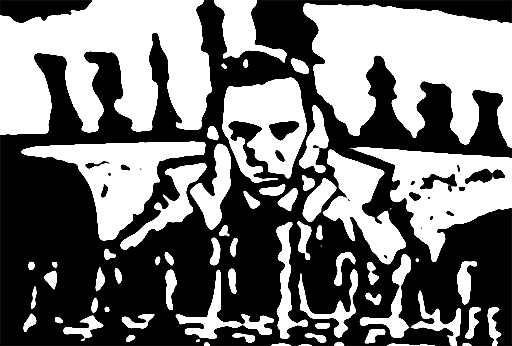People All Think The Same
On May 7th of 1997, Garry Kasparov — the second strongest chess player of all time — was hunched over a chess board. Both of his elbows rested on the table in front of him, with one hand clutching his forehead. His face sported a look of the purest determination.
His opponent felt nothing. It was Deep Blue, a machine built by IBM and, at the time, the most powerful computer chess player in existence.
The match ended in a draw after 56 moves and lasted just over 5 hours, but most notable was Kasparov’s opening strategy. He intended to force Deep Blue out of “The Book” as quickly as possible, in the hope that human ingenuity would have an advantage over the rigid processing of the machine.
Chess and the Book
The earliest recorded chess match dates back to the 10th century, played between a historian and a student. Since then, it’s become a tradition for moves to be recorded — especially if a game has some significance, like a showdown between two strong players. As a consequence, today, students of the game benefit from one of the richest data sets of any game or sport, with sites like ChessBase boasting more than 6 million recorded matches.
These recorded matches are sometimes referred to as “The Book,” as in, “He’s still playing from The Book,” which means that they’re playing a move that has been played before in the history of recorded chess.
It may not be immediately obvious that there exist chess moves that haven’t been played before. Claude Shannon famously estimated the number of possible chess positions at \(10^{43}\). That’s a whole lot more than the number of atoms in an apple — more possible moves than humans can ever hope to play.
If you wanted, you could go right now and download a chess program, load a few million recorded matches into it, and check whether or not a move has ever been played before by another human being. If you were playing against a friend, you could pull up a computer and compare your own moves to those of other players throughout recorded chess history — a sort of thread linking yourself with someone two hundred years ago.
Human thought is a lot like chess.
Been There, Thought That
This is a somewhat embarrassing and juvenile admission, but there was an AskReddit 20 days ago, “What is something you want to touch more than anything in the world?” I tried to come up with something creative, couldn’t think of anything good, and thought, “Welllll, guess I’ll go with Scarlett Johansson’s boobs.”
I opened the thread and that was the second most popular response.
Earlier today, Scott posed a question to his readers, “What’s a lifehack that everyone uses?” I came up with a few that I thought were clever — calendars, clocks, hand-washing, prayer and meditation. Except when I scrolled through the comments, people had thought of each of those ideas, along with maybe fifty others.
Another example: during a lull in conversational topics with friends, I sometimes drag problems that I’ve been thinking about into the discussion arena — something like, “What are the most important things for a man to know?” These are problems where I’ve spent maybe four or so hours working on them, but haven’t discovered anything satisfying.
These conversations are eerie. I sit and watch people run through thought processes that I’ve already had, offering suggestions that I’ve already considered, thinking thoughts I’ve already thought.
A “Book” of Thoughts
All of these are cases where someone has either thought something before me, or I’ve thought of something before them. These thoughts have been thought before. This is like “The Book” in chess. Thoughts are moves that have been played before.
Sure, we don’t have a central repository of thoughts in the same way that there is a database of chess matches, but we do have all the words published and indexed by Google on the internet, along with more than 35 million books in the Library of Congress.
If I want to have a novel thought, to produce some actual insight, I’m tasked with trying to think something that a human being has never thought before. This is not too difficult. I can invent a sentence like, “Imagine a giraffe that’s made out of extension cords, except where the plugins are eels with toothy, human-like grins.” This is a novel thought, but that’s about the extent of positive things that one can say about it. It’s useless.
Thinking something novel and useful is harder.
An Algorithm for Thought
The insinuation, then, is that human thought (or reason) is a structured process. It occurs broadly in the same way across individuals.
Which is not to say that my thoughts and your thoughts are identical. Thanks to a variety of genetic and environmental causes, we run on sorta different hardware, and we each have absorbed a different knowledge base to reason from.
Still, human thought is surprisingly homogeneous. Often I will make an observation to a friend or family member and they will say, “That’s what I was thinking.” This is a clue that we’re all doing the same sort of thing in our heads. Our thoughts are like water, each drop tending to end up coursing through the same canyons.
Further Reading
- I’ve written before about some moral implications of the view that humans are damn similar.
- For more on “The Book” and chess, Radiolab talks about it in this episode, or check out The Most Human Human.
- Why is human reasoning so similar? There are probably universal laws of valid inference — first-order logic and Bayesian inference are possible candidates — which we have evolved towards.
